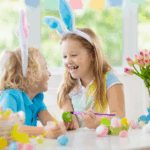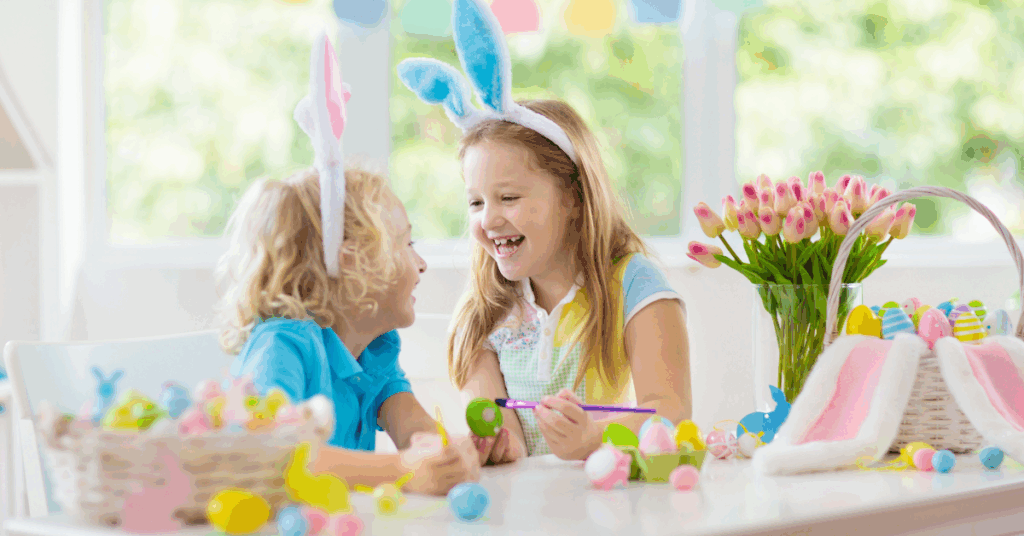Creative & Fun Gratitude Practices for Kids: Cultivating Thankfulness
Tis the season for thankfulness and as moms and parents, teaching our children gratitude is so important. Instilling a sense of thankfulness not only nurtures emotional intelligence but also helps children appreciate the little things in life. Here are some creative and fun gratitude practices/activities that you can incorporate into your daily routines or Thanksgiving season.
1. Start a Gratitude Jar
One of the simplest and most effective ways to cultivate gratitude is through a gratitude jar. This visual and interactive practice encourages kids to actively reflect on the things they are thankful for throughout the year.
- Materials Needed: A jar or container, colorful paper, and pens or crayons.
- Instructions:
- Decorate the jar together as a family. Use stickers, paint, or markers to make it uniquely yours.
- Cut the colorful paper into small squares or strips. Encourage your child to write or draw something they’re grateful for each week.
- As the jar fills up, you’ll have a visual reminder of all the cherished memories and moments of gratitude.
This practice not only fosters creativity but also serves as a wonderful family tradition. As Thanksgiving approaches, you can read the notes together, reflecting on all the good things in your lives. This simple act helps children recognize their blessings, reinforcing their understanding of gratitude.
2. Have a Gratitude Scavenger Hunt
Turn gratitude into a fun adventure with a scavenger hunt! This activity can be tailored to any setting, whether at home or outdoors. We tend to favor taking it outdoors as a fantastic way to connect with nature and encourage mindfulness!
- Materials Needed: Paper (for the checklist) and pen/marker
- Instructions:
- Create a list of items or experiences that your child should find or identify—like a favorite toy, a family photo, or something that makes them happy.
- Encourage them to include intangibles and feelings like smells, the beauty of the trees, the warmth of the sun, or the sound of birds.
- As they find each item, encourage them to share why they are thankful for it.
This engaging activity encourages children to think critically about their surroundings and helps them recognize the joy in familiar objects and everyday surroundings. It’s also a wonderful way to create cherished memories together while reinforcing a sense of appreciation for the world around us.
3. Everyday Hero Thank You Cards
Thank you cards are nothing new, but creating cards to show appreciation for the everyday heros that surround us can help children learn the importance of acknowledging others’ kindness.
- Materials Needed: Blank cards or cardstock, crayons, stickers, and envelopes.
- Instructions:
- Encourage your child to create a list of community helpers they encounter. You can help with examples like trash collectors, mail persons, teachers, firefighters, etc.
- Gather your supplies and set up a crafting station.
- Help them write a simple message of thanks, illustrating what they appreciate about the person.
- Mail or hand-deliver the cards together.
This practice not only teaches kids the importance of expressing gratitude but also strengthens their social skills. It can also lead to cherished memories as you watch their confidence grow with each card they create.
4. Daily Gratitude Rituals
Incorporating gratitude into your daily routines helps children develop a habit of thankfulness that lasts a lifetime. Simple rituals can be easily integrated into mealtimes, bedtime, or other regular activities.
- Gratitude at Dinner: Before meals, have everyone share one thing they’re thankful for that day. It could be something small, like enjoying a favorite food, or something bigger, like spending time with family.
- Bedtime Reflections: At bedtime, encourage your child to share three things they loved about their day. This can be a special bonding time for you as a parent to slow down, connect, and help them reflect.
- Gratitude Jar: As mentioned earlier, this can be a daily activity where you add notes to the jar.
Creating these rituals not only reinforces the importance of gratitude, but also builds a strong family bond. It encourages kids to look for the positive in their lives, making it easier for them to find joy and contentment. What a gift to instill!
5. Storytime with a Gratitude Twist
Books are a great way to introduce concepts of gratitude in a fun and engaging way. Choose stories that highlight themes of thankfulness, sharing, and community.
Books that emphasize gratitude:
- “Those Shoes” by Maribeth Boelts
- “Thank You, Mr. Panda” by Steve Antony
- “The Thank You Book” by Mo Willems
- “All the World” by Liz Garton Scanlon
- “Gracias/Thanks” by Pat Mora
- “The Secret of Saying Thanks” by Douglas Wood
- “No One But You” by Douglas Wood
After reading, discuss the book with your child. Ask them what they liked and what they’re thankful for in their own lives. Storytime is a powerful way to teach lessons about gratitude in a relatable manner. It can spark meaningful conversations and inspire your child to think about the importance of thankfulness.
Final Thoughts
As the Thanksgiving season approaches, it’s the perfect time to cultivate gratitude in your little ones. By incorporating these creative practices into your family’s daily routines, you’re not only teaching your child about thankfulness but also creating cherished memories that will last a lifetime.
Embrace these moments as a mom or parent, and watch your children flourish in their understanding of gratitude. From gratitude jars to thankful trees, these activities will help your family foster a spirit of appreciation that transcends the holidays and becomes a cherished custom throughout the year.
Visit our blog page for articles about creative Thanksgiving activities for kids.


















